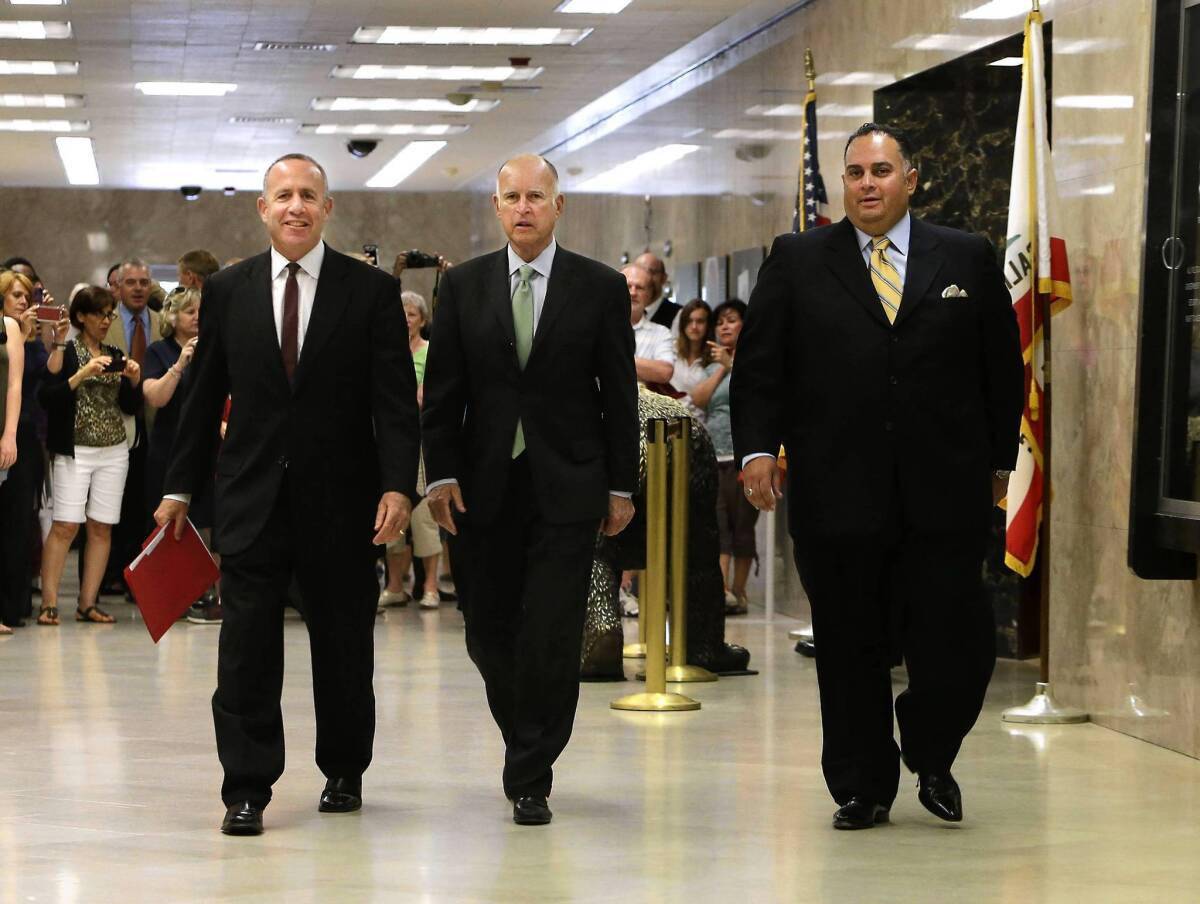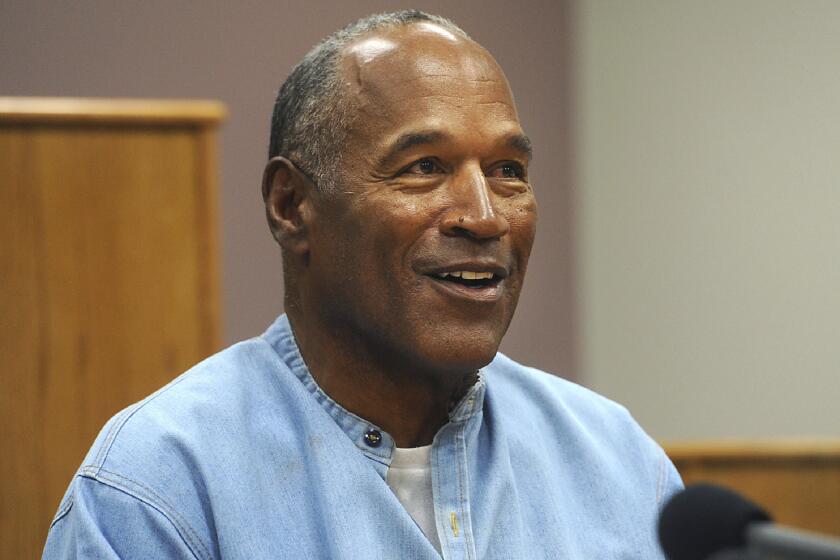Give credit to California voters

SACRAMENTO — The Capitol’s three most powerful politicians danced a victory jig Tuesday to celebrate the pending passage of an on-time, balanced state budget. And they did deserve to enjoy the moment.
Spiffed up in dark suits, buttoned jackets and ties, Gov. Jerry Brown, Senate leader Darrell Steinberg (D-Sacramento) and Assembly Speaker John A. Pérez (D-Los Angeles) proudly performed for nine TV cameras in a news conference room packed with reporters.
“Ho-hum,” Steinberg joked. “Another on-time, balanced budget in California. This is the third year in a row and this one feels better than even the first two.”
Yes, the California Legislature no longer is dysfunctional. Erase that word from its profile. It is functioning.
And give these three credit for congeniality and compromise.
But let’s not forget where most of the credit belongs for a punctual, sensible budget. It’s with another, oft-maligned group: the California voters.
True, voters frequently don’t pay enough attention to what’s happening in government capitals. Far too many don’t even vote. Only 23.3% of Los Angeles city voters turned out to elect a new mayor last month.
But often the voters get it right.
Sacramento’s hopefully new tradition of enacting on-time budgets that pass the smell test results directly from two ballot measures endorsed by voters.
The most important — one that has liberated the Legislature and governor from oppressive gridlock — was Proposition 25 in 2010. Approved by a 10.2-point margin, it eliminated the inane, decades-long requirement that budgets must be passed by a two-thirds legislative majority. Now they need only a simple majority.
For many years, the Legislature routinely ignored its June 15 constitutional deadline for budget passage and procrastinated long into summer, embarrassing itself and harassing public schools that couldn’t plan and private vendors who couldn’t collect from the state.
One provision of Prop. 25 particularly sealed the deal. It was inserted into the measure by sponsoring labor unions to attract the support of angry voters. It worked — not only as a voter appeal, but as a harsh prod on legislators. If lawmakers didn’t meet their June 15 deadline, they’d forfeit their pay until the budget passed. And there’d be no makeup money.
The other measure crucial for the pending budget, which is expected to pass the Legislature on Friday, was Brown’s Proposition 30 tax increase that voters approved by a 10.8-point margin last November.
Prop. 30 was bad tax policy because it worsened the state’s revenue instability by leaning even more heavily on the rich and their volatile capital gains. But it did stanch the budget bleeding. Without it, $5.9 billion would have been yanked from education spending. And this year, the Legislature and governor would have been back to whacking programs instead of beginning to restore some.
“I stood here in 2009 as the new leader of the state Senate staring down the barrel of a $42-billion deficit,” Steinberg recalled. “We stand here today and the budget is in black, balanced and better prepared to weather the storms ahead.
“With the economic crisis behind us, we came to the table with an eye to the future but mindful of the past.... Who wants to go back to 2009 or 2011? Nobody.”
For that reason, Brown told reporters, he insisted during budget negotiations on “prudence rather than exuberance.”
Brown was the big winner because he secured approval of a close facsimile of his landmark proposal to redistribute school funding, pouring more money into districts with heavy concentrations of low-income and English-struggling students.
But the Legislature significantly improved his plan by spreading the money more widely and making it fairer for suburban, middle-class schools.
Under Brown’s original proposal, roughly one-quarter of California’s school districts couldn’t have climbed back to their pre-recession spending levels before the end of the decade. Under the compromise, virtually all will.
“I’m happy with the way it came out,” says Assembly Education Committee Chairwoman Joan Buchanan (D-Alamo), who had been a strong critic of Brown’s plan.
“It allocates more money for at-risk students. And that’s good. We can’t afford to leave those kids behind. But it also does what I’ve been arguing for. It increases the base” funding for all students.
Sen. Hannah-Beth Jackson (D-Santa Barbara), another skeptic of the initial plan, says, “I think it’s a good compromise. It’s not a cause to break open the champagne corks. But it’s better than it was and better than it might have been.”
And one very good thing about it: The new spending formula is not embedded in the state Constitution. It can be tinkered with by a future governor and Legislature. Any change would not have to go before voters, the curse of ballot initiatives.
Changing the way school money is spent was one of two lines in the sand that Brown drew in budget bargaining.
The other was that his more conservative revenue estimate had to be adopted. It was $3.2 billion lower than the legislative analyst’s. The governor insisted that the general fund budget not exceed $96.3 billion.
Given those constraints, Steinberg and Pérez could pass — and Brown would sign — whatever pet projects they wanted. Just spend within the available funds.
So the legislative leaders secured new money for mental health treatment, dental care for the poor, welfare grants, middle-class college scholarships and career tech (“shop”). Not all they wanted, but some.
Conceding that many legislators “find some of the things that I want to do somewhat distasteful,” Brown noted that “this is the separation of powers. But it’s working....”
The politicians are doing a victory dance, courtesy of voters who provided the music.
More to Read
Start your day right
Sign up for Essential California for news, features and recommendations from the L.A. Times and beyond in your inbox six days a week.
You may occasionally receive promotional content from the Los Angeles Times.






